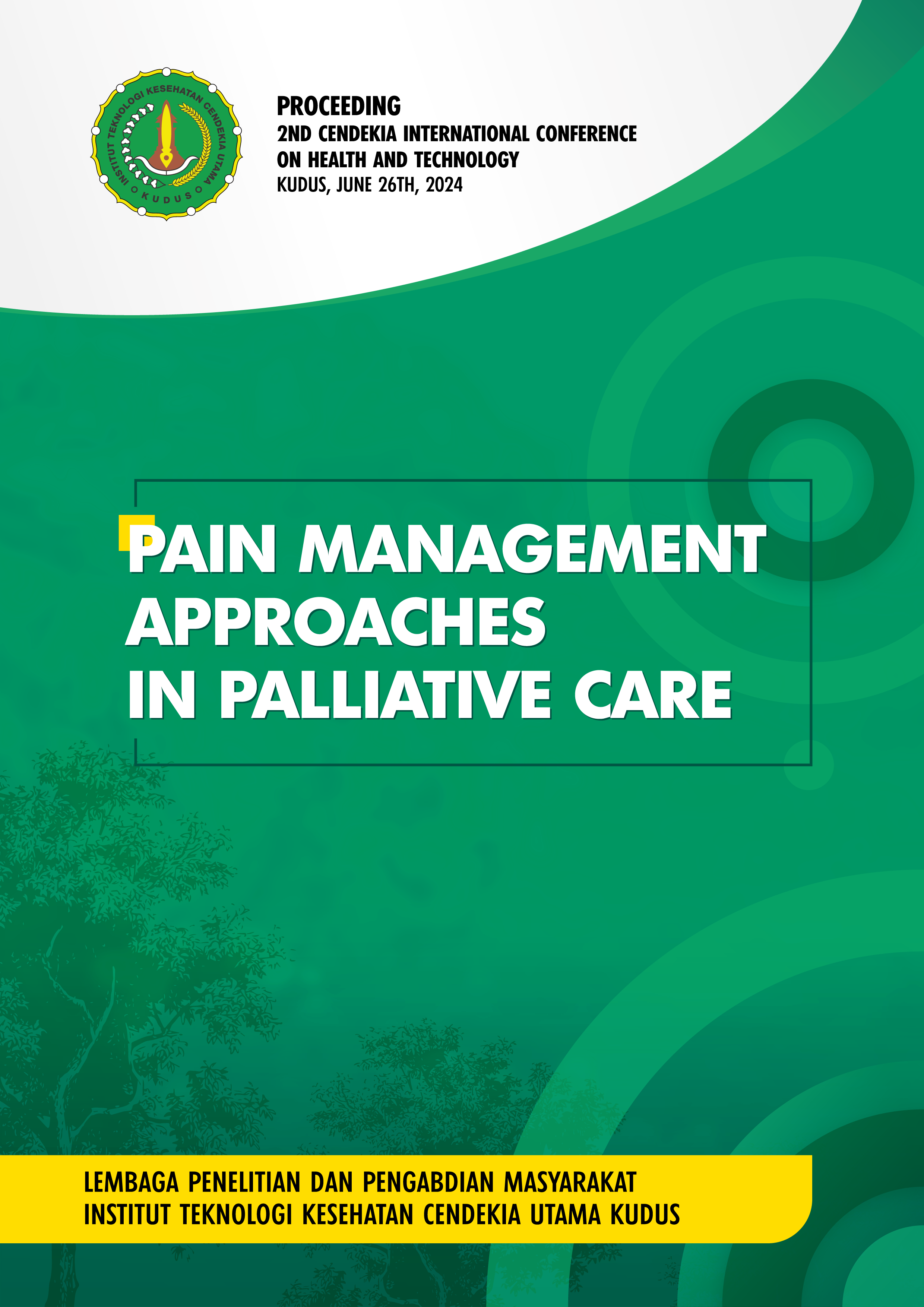The Influence Of Health Education Using Focus Group Discussion (Fgd) Method On The Level Of Pregnant Women's Knowledge About Complementary Herbal Therapy In Reducing Discomfort During Pregnancy In Kebonagung Village, Sumowono District, Semarang District
Main Article Content
Abstract
Women during pregnancy experience many changes in themselves, both physically and psychologically. Physical discomfort can be felt from the start during pregnancy. In the first trimester, a mother usually experiences nausea, vomiting, fatigue and tiredness. Nausea and vomiting occur in 60-80% of primigravidas and 40-60% of multigravidas. The aim of the research is to determine the effect of health education using the FGD (Focus Group Discussion) method on the level of knowledge about herbal complementary therapy among pregnant women in Kebonagung Village, Sumowono Health Center Working Area. The design uses a non- randomized quasi-experiment design , one group pretest posttest design with the FGD ( Focus Group Discussion ) method. The population consists of pregnant women in the posyandu in Kebonagung Village, Sumowono District The sample used was 5 pregnant women who complained of nausea, vomiting and low back pain . The analysis technique used is the Paired t-test. The results showed that of the 5 respondents before being given health education, 40% of the respondents had sufficient knowledge and 40% had insufficient knowledge. After health education, all respondents were 100% well-informed, which means there was an increase in respondents' knowledge. This increase is significant with a value of p = 0.002 (p < 0.05). Complementary therapy is traditional medicine that has been recognized and can be used as a companion to conventional medical therapy. Health education really helps pregnant women in increasing their knowledge of complementary therapies and it is hoped that this can be applied to their lives
Downloads
Article Details
References
Abebe Basazn Mekuria, D. A. E., & Dkk. (2017). Prevalence and associated factors of herbal medicine use among pregnant women on antenatal care follow-up at University of Gondar referral and teaching hospital, Ethiopia: a cross-sectional study. BMC Complement Altern Med, 1(17). https://doi.org/10.1186/s12906-017-1608-4.
Ani, I. P., & Machfudloh, M. (2021). Literature Review: Terapi Komplementer Untuk Mengurangi Mual Muntah Pada Ibu Hamil. Bhamada: Jurnal Ilmu Dan Teknologi Kesehatan (E-Journal), 12(2), 20–26. https://doi.org/10.36308/jik.v12i2.301
Ani Nurdiana. (2018). EFEKTIFITAS PEMBERIAN PERMEN JAHE TERHADAP MUAL MUNTAH PADA IBU HAMIL DI KLINIK KHAIRUNIDA SUNGGAL TAHUN 2018 Ani. In Tugas Akhir. http://dx.doi.org/10.1186/s13662-017-1121-6%0Ahttps://doi.org/10.1007/s41980-018-0101-2%0Ahttps://doi.org/10.1016/j.cnsns.2018.04.019%0Ahttps://doi.org/10.1016/j.cam.2017.10.014%0Ahttp://dx.doi.org/10.1016/j.apm.2011.07.041%0Ahttp://arxiv.org/abs/1502.020
Assa Aprin Tania, Ika Yudianti, Eny Sendra, & Ririn Indriani. (2022). The Effect of Herbal Therapy on Emesis Gravidarum. Indonesian Journal of Sport Management and Physical Education, 1(1), 11–38. https://doi.org/10.55927/ijsmpe.v1i1.2207
Indriyani, I. (2017). PENGARUH PENDIDIKAN KESEHATAN TERHADAP PENGETAHUAN MASYARAKAT TENTANG TERAPI KOMPLEMENTER JUS MENTIMUN UNTUK MENURUNKAN HIPERTENSI DI RW 06 KEL. PAJAJARANKOTA BANDUNG 2017. Poltekkes Kemnekes Bandung Jurusan Keperawatan Bandung.
Komang, N., Agustini, T., Sagitarini, P. N., Rosa, K., & Anggaraeni, T. (2023). Pemanfaatan Complementary and Alternative Medicine pada Ibu Hamil Pendahuluan Metode.
Larisa A J Barnes , Lesley Barclay , Kirsten McCaffery, P. A. (2019). Complementary medicine products: Information sources, perceived benefits and maternal health literacy. Women Birth. https://doi.org/DOI: 10.1016/j.wombi.2018.11.015
Lindquist, R., Tracy, F. M., & Snyder, M. (2018). Complementary and alternatice therapies in nursing (8th ed.). Springer Publishing Company.
Nik Yusof Fuad, N. F., Ching, S. M., Awg Dzulkarnain, D. H., Cheong, A. T., & Zakaria, Z. A. (2020). Complementary alternative medicine use among postpartum mothers in a primary care setting: a cross-sectional study in Malaysia. BMC Complementary Medicine and Therapies, 20(1), 197. https://doi.org/10.1186/s12906-020-02984-7
Notoatmodjo. (2018). Metodologi Penelitian Kesehatan (3rd ed.). PT Rineka Cipta.
Oktaviani, P. (2022). Efektivitas Pemberian Seduhan Jahe Dan Daun Mint Terhadap Rasa Mual Muntah Pada Ibu Hamil Trimester I Di Pmb Kabupaten Bogor Tahun 2021. Jurnal Kebidanan, 11(2), 104–109. https://doi.org/10.35890/jkdh.v11i2.200
Prawirohardjo.S. (2011). Ilmu Kandungan (prof.dr. Ali Baziad (ed.); ketiga cet). PT BINA PUSTAKA SARWONO PRAWIROHARDJO.
Prawirohardjo. (2017). Ilmu Kebidanan. PT BINA PUSTAKA SARWONO PRAWIROHARDJO.
Putri, A., Andriani, & Haniarti. (2016). Efektifitas Pemberian Jahe Hangat Dalam Mengurangi Frekuensi Mual Muntah Pada Ibu Hamil Trimester I. Iding Seminar Nasional IKAKESMADA “Peran Tenaga Kesehatan Dalam Pelaksanaan SDGs”.
Putri, I. L. (2018). Pengaruh pendidikan kesehatan dengan vidio terhadap pengetahuan tantang pemeriksaan payudara sendiri (Sadari) pada wanita subur (Wus). 1–93.
Triwijayanti, Y., & Septiyani, R. (2023). Pengetahuan ibu hamil tentang asuhan komplementer kehamilan berdasarkan karakteristik di tpmb ponirah margorejo metro selatan kota metro. 1(6), 1133–1144.
Yahya, F. D. (2022). Pengaruh Pemberian Terapi Jeruk Purut Dan Rebusan Air Jahe Terhadap Frekuensi Mual Muntah Ibu Hamil Yang Mengalami Hyperemesis Gravidarum Tahun 2022. Jurnal Kesehatan Delima Pelamonia.

